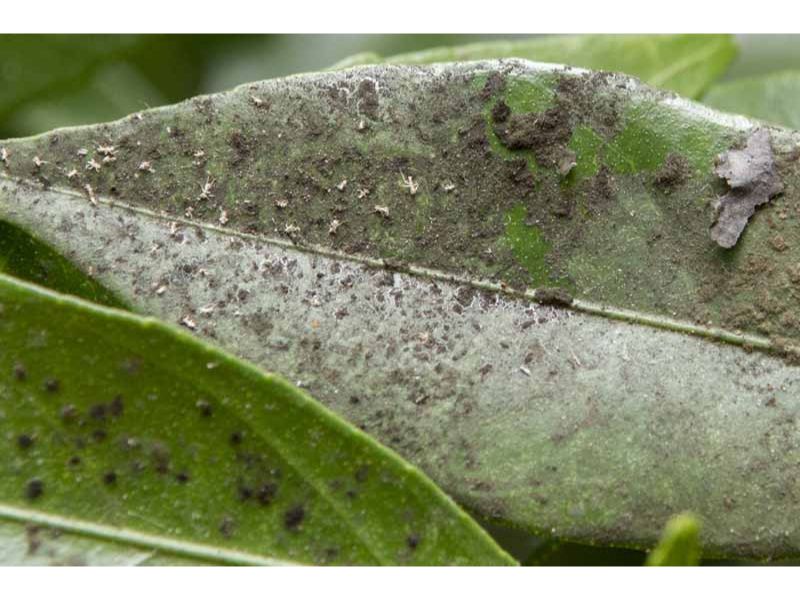Small, winged insects known as whiteflies typically reside on the undersides of leaves. They can do a lot of damage to plants and are a prevalent problem in greenhouses and gardens. Whiteflies weaken plants by sucking their sap, which can make them more vulnerable to other pests and diseases.
Honeydew, a sticky liquid they secrete, can both attract additional pests and foster the development of sooty mold. Once whiteflies have established themselves in an area, they can be difficult to eradicate. However, there are measures that can be taken to prevent them from spreading. Some advice is as follows:
Before bringing plants indoors, you should give them a thorough once over. Whiteflies are notorious hitchhikers, so it’s crucial to inspect any new plant material thoroughly before introducing it into your house or yard.
How Devastating Are the Effects of Whiteflies?
In extreme cases of whitefly infestation, plants may lose leaves and experience growth retardation. Honeydew, a sticky material produced by whiteflies, can encourage the formation of sooty mold and attract other pests like ants.
How to Spot a Whitefly Problem
Whiteflies are tiny, winged insects that feed by sucking plant sap. Until they have already done significant damage to the plant, they can be difficult to detect. If you suspect your plant has whiteflies, check for the following signs:
Leaves turning yellow or wilting can be caused by whiteflies, which feast on a plant’s sap.
Whiteflies, while feeding, release honeydew, which causes leaves to become sticky. This honeydew will attach to the plant’s leaves and may attract further pests.
Adult whiteflies may be seen flitting around your plant, and their nymphal offspring may be seen crawling on the leaves. A nymph is a juvenile stage creature that matures into an adult.
Whitefly Management Using Natural Means
Whiteflies are small insects that can cause significant damage to your plants by draining their sap. They have a particular penchant for summer produce including tomatoes, cucumbers, and squash. Whiteflies usually don’t do any real lasting damage to plants, but they can seriously restrict development and cause premature fruit loss.
Whiteflies can be managed in a number of methods, both chemically and organically. In order to keep whiteflies at bay in their organic gardens, organic gardeners need access to reliable natural control measures.
Putting yellow sticky traps about your house is a great technique to catch and kill whiteflies. Adult whiteflies can be captured in these sticky traps. To be effective, the traps must be set before the whiteflies arrive. When a Trap is filled, it should be thrown away and a new one installed.
Promoting natural predators is another efficient strategy for reducing whitefly populations. Some beneficial insects that eat whiteflies include ladybugs, green lacewings, and Minute Pirate Bugs. These helpful insects are widely available for purchase from both brick-and-mortar and online garden centers.
Whiteflies are easily killed with homemade insecticidal soap sprays. These sprays work best when used directly on the bugs. Make sure the spray won’t hurt the plant by trying it out on a small area first.
Whitefly Management Through Mechanical Means
Several mechanical methods exist for eradicating whiteflies. One option is to take them off manually. To accomplish this, gently wipe them off the leaves using a cotton swab or a scrap of paper towel. Yellow sticky traps can also be set up near plants that have been affected. Whiteflies will be drawn to the traps and stuck on the sticky surface.
Chemical Methods for Whitefly Management
Whitefly infestations can be dealt with in a number of ways, the most efficient of which will depend on the degree of the problem. In the case of a minor infestation, gardeners can usually get away with just ripping out and trashing the infected plants. On the other hand, chemical pesticides can be required for really bad infestations.
Whiteflies can be managed with any one of several available pesticides. Imidacloprid, neem oil, and pyrethrin are just a few of the more prevalent choices. Before using an insecticide, be sure you’ve read and understood all of the label’s instructions. It’s crucial to be mindful of helpful insects like honeybees while using any form of pesticide.
Whitefly populations can be reduced by a combination of chemical measures and cultural practices. These measures include planting resistant species of plants, keeping gardens clean and clear of debris, and watering gardens early in the day so that leaves have time to dry before dusk.
Advice for Preventing a White Fly Infestation
Here are some measures you may do to keep whiteflies out of your garden:
- Look for whiteflies and whitefly damage on your plants on a consistent basis.
- Get rid of the whiteflies as soon as possible if you see them on your plants.
- Eliminate weeds and other garden clutter that whitefly larvae can use as hiding places.
- Put up screens or row covers over your garden beds to protect your plants from whiteflies.
- Choose marigolds (Tagetes spp.) or any plant that can withstand some whitefly damage.
- Use yellow sticky traps or other whitefly-targeted traps.
Conclusion
Whiteflies are a common problem in gardens, but they may be controlled with the correct measures. Whitefly identification and control require an understanding of the insect’s life cycle.
You may keep whitefly populations down by getting rid of the plants they feed on, avoiding certain areas, planting repellents in your garden, and bringing in beneficial insects like ladybugs. Keeping these suggestions in mind, you should be able to control this annoying insect.


